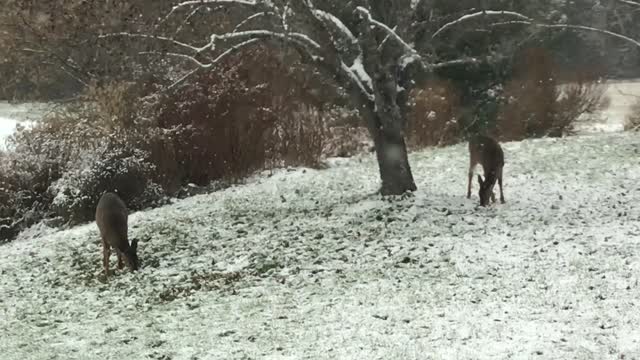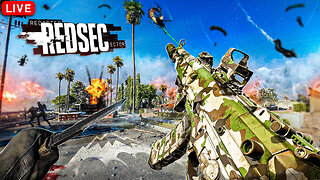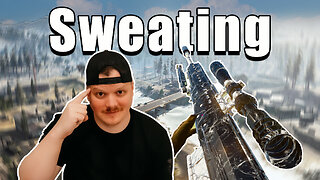Premium Only Content

Baby deer & mom frolic in first snow of the season
Such a beautiful sight to wake up to. This mom and 2 small fawns stopped out on my back property to feed on the apples and berries.
Here in New Hampshire, the white-tailed deer population is approximately 100,000 individuals. The areas of greatest densities are in the southern counties (Rockingham, Hillsborough, and Cheshire) and along the Connecticut River Valley (Grafton County). In 2014, the NH Fish and Game Department began the process of revising its 10-year management plan for white-tailed deer, moose, turkey, black bear, snowshoe hare, and ruffed grouse.
This document, called the NH Game Management Plan, spans the period of 2016 to 2025. Population level goals for deer were adjusted to more closely reflect current biological conditions and limitation, as well as public interests and concerns. These goals aim to stabilize the deer population in many areas of the state while increasing or reducing it in others.
Habits and Habitats
White-tailed deer can live in a variety of habitats, including farmlands, brushy areas, woods, mountains, and suburbs and gardens. They feed on green plants, including aquatic species in the summer, acorns, beechnuts, and corn in the fall, and woody vegetation, including buds and twigs of birch, maple and conifers in the winter. White-tailed deer will typically consume 5 to 9 pounds of food each day and find water from snow, dew and waterbodies.
Individual deer group into two types of social combinations. These include the family group, with a doe and her young, and the buck group. The family group will stay together for approximately a year. Buck groups are structured with a dominance hierarchy of 3 to 5 individuals. Bucks will challenge each other with stares, lowered ears, kicking, sparring (physically pushing each other back), and less commonly, thrashing of forefeet.
During the winter, these two deer groups may come together, forming communities of up to 150 individuals in locations called “yards.” This unification keeps trails open and accessible for feeding and also provides protection from predators. However, there have been problems with humans providing supplementary feed sites for deer in the winter. These sites can cause unnaturally high densities of congregated deer that attract predators, increase the risk of disease transmission, increase aggression within the community, and lead to over-browsing of local vegetation and more deer-vehicle collisions. They cause deer to be more dependent on humans and artificial food sources that provide few benefits.
-
 1:00:21
1:00:21
Candace Show Podcast
1 hour agoWhy Isn't The Trump Family Asking Questions About Charlie Kirk? | Candace Ep 254
8.54K59 -
 LIVE
LIVE
Nikko Ortiz
53 minutes agoREALISTIC BATTLEFIELD SIMULATOR... |Rumble Live
107 watching -
 33:34
33:34
Stephen Gardner
1 hour ago🔥Democrats are PANICKING after losing this FIGHT!!
2.96K6 -
 LIVE
LIVE
StoneMountain64
5 hours agoBattlefield Battle Royale is BETTER than I expected
134 watching -
 LIVE
LIVE
Viss
8 hours ago🔴LIVE - Viss & Dr Disrespect Dominate Duos In Battlefield RedSec!
102 watching -
 LIVE
LIVE
Red Pill News
2 hours agoNGO’s Caught Funding CCP on Red Pill News Live
3,662 watching -
 LIVE
LIVE
GritsGG
3 hours agoDuos into Quads! #1 Most Wins 3880+!
25 watching -
 LIVE
LIVE
Spartan
3 hours agoFirst playthrough of First Berserker Khazan
8 watching -
 LIVE
LIVE
ReAnimateHer
7 hours ago $0.13 earnedScreaming, Failing, and Probably Dying – A Normal Night in Dead by Daylight
22 watching -
 LIVE
LIVE
LFA TV
21 hours agoLIVE & BREAKING NEWS! | WEDNESDAY 10/29/25
986 watching